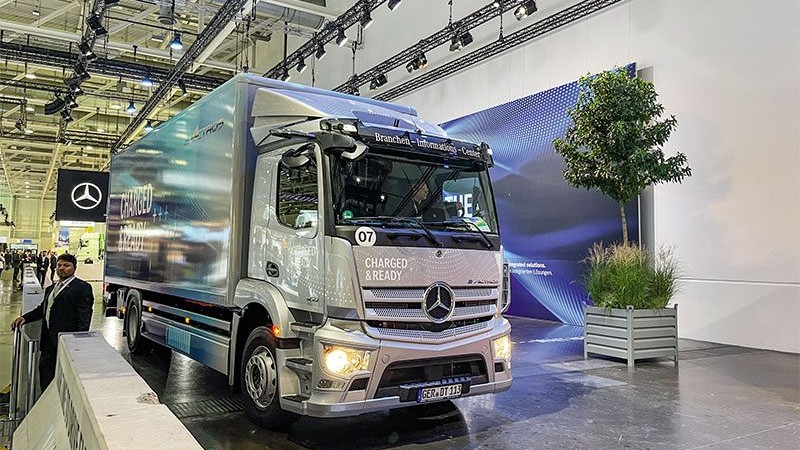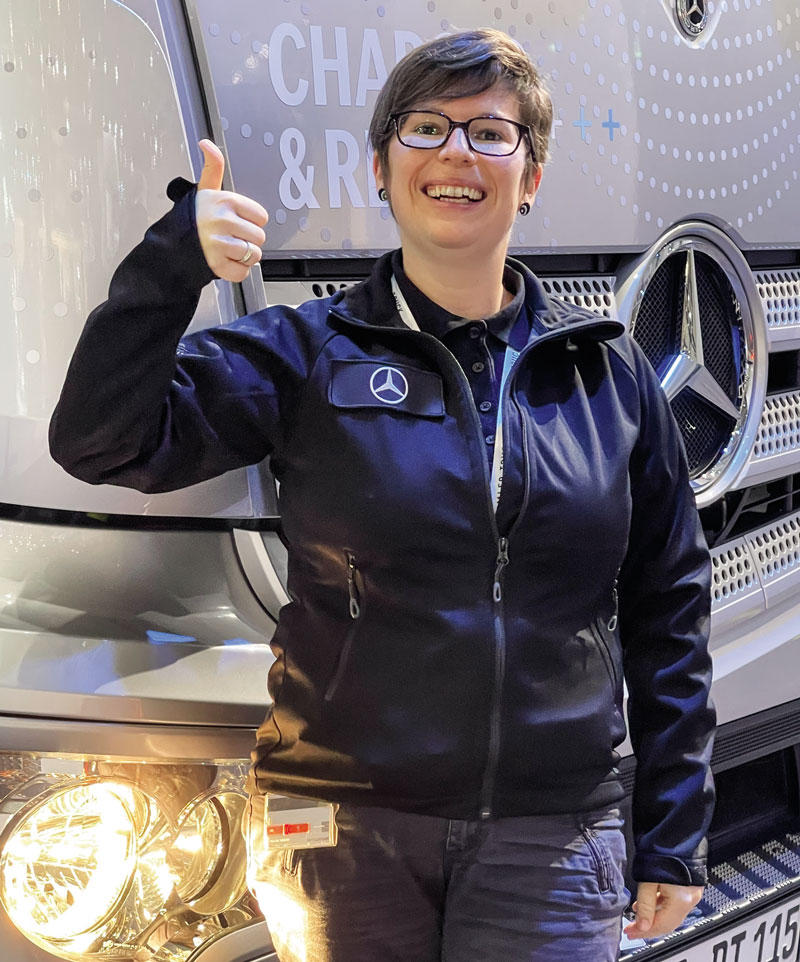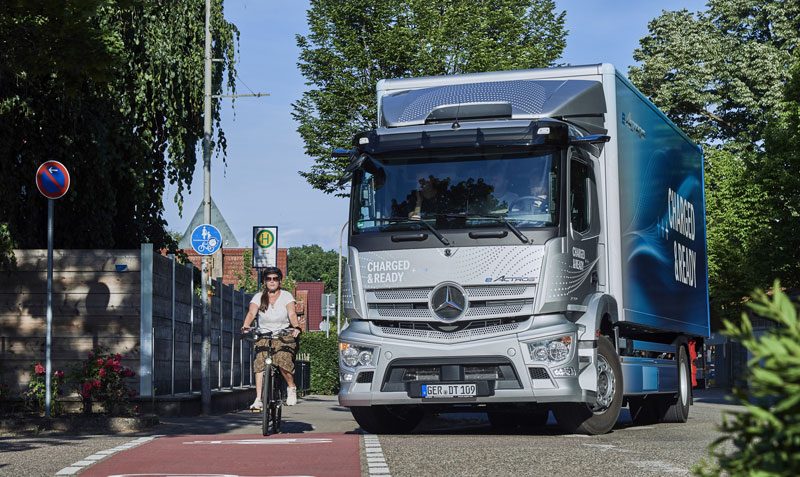Like you’ve never driven before

When petrol gave way to diesel, it altered the way trucks were driven immeasurably, as it did when mechanical diesel was superseded by electronic. With diesel about to yield to electric drives, it’s hard to label it an evolution, rather a renaissance of driving as an art form.
I get the question all the time regarding the electric car. ‘What’s it like to drive?’ If we’re not in a position where I can throw the interested party behind the wheel, my answer is always the same: ‘It’s the easiest vehicle in the world to drive, and one of the hardest to drive consistently smoothly.’
The truth is everyone currently taking part in the e-rebirth of vehicular land-based transport are novices on a steep learning curve. We are all in the adaptation phase. There is much to learn.
Take energy. As we understand it in the automotive sense, energy is no longer there to be merely preserved. There’s certainly an irony in saying energy is now a fluid thing, able to be repatriated as well as called up for service. In the ‘e’-world, we have this wonderful new thing called ‘regeneration’: the ability for the vehicle to repatriate energy into the system when off the throttle, simultaneously providing a significant level of retardation. One-pedal driving, they call it. Get it just right, and the regenerator stops you plum at the give-way or stop sign.

However, that potential comes at a price in terms of physics, and in these formative times, fatigue. Firstly, regeneration also has an energy cost; secondly, regenerators mean there’s no ‘personal space’ in the behavioural and emotional act of driving. Once behind the wheel of ‘tomorrow’s’ vehicles, you realise how often in the ‘bad ole days’ you actually came off the throttle even momentarily, allowing the vehicle to glide as it were, and giving both driver and machine a moment of respite. That doesn’t exist in an EV with the regenerator activated – everything counts. When you’re on the throttle, it’s going. When you’re off, it’s ‘actively’ slowing – and if that’s not what you wanted it to do when you lifted your foot, it’s irritating. The closest you’ll ever get to personal space in that environment is cruise control, and it’s never ideal to consider cruise control in those terms.
But you need that recouped power. After all, that’s the holy grail in this gig. Isn’t it? Well, that’s what I thought… then I met Franziska Keller.
I was booked in for a drive of the rigid metro/regional eActros 300 at IAA Hanover last year, and Franziska was my chaperone.
Based in Stuttgart, she works for the German giant as a software developer in the EV truck programme, specialising in driver assistance. In terms of people who know their stuff when it comes to punting an EV, she and her colleagues would be hard to head off. Suffice to say, I was quite nervous.
I’m getting used to sitting on the wrong side of the cab and driving down the wrong side of the road. Europe’s a much tighter driving experience than New Zealand, with pokey lanes, avenues, and streets. The general driving quality is high when you look at where people put cars, much less trucks.
The 4×2 rigid Actros 300 was your typical point-and-shoot, deathly-silent-with-a-slight-whine, BEV. I have enough BEV trucks under my belt now to have the ‘wow’ factor subdued somewhat. BEVs are a genre for me now, with a ‘BEV- ness’ that’s common to their electromechaincal DNA.
I motored around the city streets, following her direction, as we chatted about our respective countries and careers. Not blowing smoke or anything, but she was impressed at how comfortable she felt with a ‘righty’ driving her around a European city he didn’t know from a bar of soap. I was equally surprised at how comfortable I was, with the seat foam at no risk of being drawn into my large colon.
The route took us through Hannover’s city fringe, a couple of larger metropolitan link roads – think Wiri Station/ Moorhouse Ave sort of gig – plus a snippet of motorway action to see what happened when you fed it the electrons and how well the regenerator worked. From there, it was a return to the convention centre.
In and around the city streets, the Actros responded instantly; steering and braking were sublime, as you’d expect. The abundance of safety systems, critical in this environment in this type of machine, kept everyone – inside and out – in a blissful state.
I was happily using the regeneration when Franziska said, “Why are you regenerating?”
I was a bit floored, and summoning my intellectual might, I responded… “Oh?”
“Turn it off,” she said. “There’s nothing to be gained. You should only use it when coming to a complete or near halt from higher speeds or descending long grades.”
I was ready to pull over at this point, grab a coffee and pretzel at a local cafe, and have an in-depth with my new friend. Were some of my personal EV frustrations being addressed?
“Regeneration is not free,” she continued. “It costs energy to put energy back in, so you have to be sure you’re coming out ahead. The closest thing you actually have to free energy is the weight of the truck when it’s coasting. They’re heavier, and that’s generally seen as a penalty. Coasting is the only place you can really use that to your advantage. Use the brakes to stop – that’s what they are there for. The regenerator will work in the blending, anyway. The absolute aim must be maintaining speed with the least amount of throttle.
“In this environment, if you’re regenerating all the time, you have to get that mass moving and up to speed again. That will take more energy than you put in.”

For those yet to ‘BEV’, there’s something you need to know at this point. When BEVs glide… oh my goodness, do they glide! You have no idea how much friction exists in ICE drivetrains until you come off the throttle in a BEV with the regenerator off. They absolutely spear along with no discernible loss in rate for what seems like an eternity.
I did what Franziska said and flicked the regenerator off. I knew what zero ‘regen’ felt like in the car, so I was expecting a loose BEV HGV to be off the hook. Now, suddenly, that which I thought was forbidden wasteful fruit was, in fact, my greatest tool.
Immediately, the world felt a whole lot smoother. Gliding was the new god. “The least amount of throttle to do what you need to achieve. Tttthat’s better,” she beamed across the cab.
Within 2km of this life-changing counsel, I realised how important tyre inflation and following distance will be in the BEV world. If you’re a tailgater, you’ll be a constant recharger, simple as that.
If I left a bigger gap – ‘anticipation room’, you might call it – I might get away with a glide rather than a brake, and a glide meant a mere finesse of the throttle would be all that was needed to regain the half kilometre per hour I’d lost.
A brake or pure regeneration event would have cost me a good old push on the ‘loud’ pedal. All of a sudden that was the last thing I wanted to do.
Since the Hanover drive, I’ve been applying the ‘Franziska’ rule in the car, and I can say I’m getting slightly more range, and it’s made the vehicle incredibly smooth. However, that impetus needs vigilance in a world currently dominated by grindy old drivetrains that feed on inertia.
And while we’re dabbling in irony, applying the Franziska rule to your ICE vehicle also makes you a far better driver. Regardless of the medium, the rules of energy apply. Go figure!
Back at the convention centre with a moment’s contemplation, discussion, and a sad farewell, Franziaka’s work was done.
Driving is not evolving. We’ve been given a blank canvas once more. In driving’s BEV renaissance, where you the practitioner truly command the energy, it’s as much an art form as it’s ever been… believe me.
Franziska, thanks heaps. You’re an absolute whizz!





